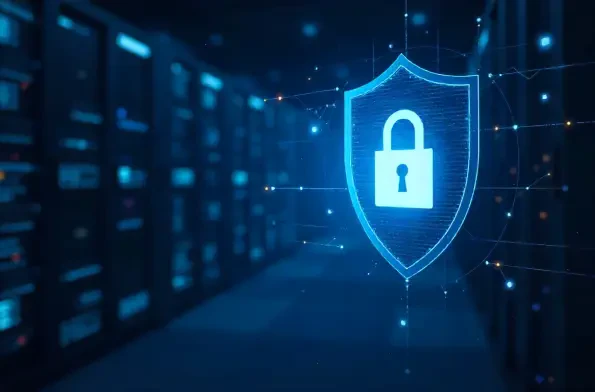In an era where cyber threats evolve at an unprecedented pace, imagine a multinational corporation facing a sophisticated attack that slips past traditional defenses, costing millions in damages within minutes, and highlighting the urgent need for faster, more precise threat detection. As enterprises grapple with escalating data breaches and advanced persistent threats, real-time Security Information and Event Management (SIEM) systems emerge as a transformative solution. This report delves into how these systems are reshaping the industry, offering insights into their capabilities, challenges, and future potential to safeguard digital landscapes against ever-growing risks.
Understanding the Cybersecurity Landscape and the Role of SIEM Systems
The cybersecurity domain is under siege, with threats becoming more frequent and complex as attackers leverage advanced techniques to exploit vulnerabilities. Data breaches are no longer isolated incidents but systemic risks, with industries across the board—from finance to healthcare—facing multi-stage attacks that evade conventional safeguards. This environment demands robust tools capable of not just detecting but also responding to incidents in real time, a need that has propelled SIEM systems to the forefront of enterprise security strategies.
SIEM systems serve as a critical backbone for threat detection and incident response, aggregating and analyzing security data from diverse sources to provide actionable intelligence. Unlike traditional setups that often lag in processing, real-time SIEM platforms prioritize immediacy, ensuring threats are identified and mitigated before they escalate. Key market players are innovating rapidly, integrating cloud computing and artificial intelligence to enhance scalability and predictive capabilities, while distinctions between legacy and real-time systems highlight a shift toward dynamic, responsive solutions.
Regulatory compliance further shapes SIEM adoption, as mandates like GDPR and HIPAA push organizations to maintain stringent data protection and reporting standards. These requirements are not mere formalities but catalysts driving investment in advanced systems that can document and respond to incidents instantaneously. As the cybersecurity landscape continues to evolve, SIEM systems remain pivotal in balancing operational security with legal obligations, setting the stage for deeper exploration into real-time advancements.
The Need for Real-Time Threat Detection
Emerging Trends in Cyber Threats and SIEM Technology
Cyber threats are morphing into sophisticated entities, with advanced persistent threats (APTs) and multi-stage attacks becoming commonplace, often bypassing signature-based defenses. These evolving dangers necessitate a departure from static detection methods, pushing the demand for real-time SIEM systems that can process events as they occur. The ability to identify anomalies during attack spikes is no longer optional but essential for minimizing damage in high-stakes environments.
Technological advancements are redefining SIEM capabilities, with machine learning and behavioral analysis leading the charge. These innovations enable systems to establish baselines of normal activity and flag deviations, catching subtle threats that traditional tools miss. Meanwhile, consumer expectations are shifting toward faster, more accurate security solutions, driven by the relentless rise in data breaches that expose vulnerabilities in delayed response mechanisms.
This landscape opens avenues for innovation, particularly in real-time processing and intuitive design tailored to user needs. Developers are tasked with creating platforms that not only handle vast event volumes but also present data in a way that accelerates decision-making. As threats grow in complexity, the push for cutting-edge SIEM technology offers fertile ground for breakthroughs that can redefine enterprise protection strategies.
Performance Metrics and Future Projections
Current performance metrics for SIEM systems reveal a stark contrast between traditional and real-time approaches, with incident response times often reduced from minutes to seconds in the latter. False positive rates, a persistent issue in security operations, are also seeing declines of up to 67% in advanced setups, allowing analysts to focus on genuine threats. These improvements underscore the operational edge provided by systems designed for immediacy and precision.
Industry reports project significant growth in real-time SIEM adoption over the coming years, with cybersecurity spending expected to surge as organizations prioritize rapid threat mitigation. From this year onward, market analyses suggest a trajectory where real-time systems could dominate by addressing high event volumes with sub-second insights. This trend reflects a broader recognition of the need for tools that keep pace with the speed of modern cyber risks.
Looking ahead, forecasts indicate that real-time SIEM platforms will become integral to security frameworks, driven by their capacity to manage escalating data flows without sacrificing accuracy. As investment in these technologies grows, their role in preempting breaches and ensuring business continuity is set to expand, positioning them as a cornerstone of future cybersecurity strategies.
Challenges in Implementing Real-Time SIEM Systems
Adopting real-time SIEM systems is fraught with hurdles, chief among them the ability to manage extreme load spikes during attack surges. Processing thousands of events per second without latency requires robust infrastructure, a challenge that can strain even well-resourced enterprises. This technical demand often necessitates significant upgrades to existing systems, posing both cost and implementation barriers.
Integration with diverse enterprise tools adds another layer of complexity, as varying log formats and network configurations can hinder seamless deployment. Achieving compatibility across heterogeneous environments often requires custom solutions like universal translators or extensive API development, which can delay rollouts. These technological obstacles highlight the need for flexible architectures that can adapt to real-world diversity without compromising performance.
Operationally, challenges such as alert fatigue among analysts and the intricacies of redesigning workflows further complicate adoption. Security teams, already overwhelmed by data, require interfaces that prioritize actionable insights over raw information, while shifting to real-time processes often demands a cultural overhaul. Strategies to address these issues include focusing on user-centric design, streamlining alert prioritization, and leveraging automation to reduce manual burdens, ensuring that the transition to real-time systems enhances rather than disrupts security operations.
Regulatory and Compliance Considerations for SIEM Systems
The regulatory framework governing cybersecurity profoundly influences SIEM deployment, with laws like GDPR and HIPAA imposing strict requirements on data protection and incident reporting. Standards such as ISO 27001 further mandate comprehensive security practices, compelling organizations to adopt systems that can document compliance in detail. These legal obligations are not just checkboxes but drivers of technology investment, ensuring accountability in an increasingly scrutinized field.
Compliance plays a pivotal role in SIEM adoption, as organizations must maintain audit trails and protect sensitive information against breaches. Real-time systems enhance these efforts by enabling immediate incident reporting and ensuring data integrity through continuous monitoring. This capability aligns directly with regulatory demands for transparency and swift action, making such platforms indispensable for meeting legal expectations.
As regulations evolve, they continue to shape SIEM practices, necessitating features like real-time analytics and detailed logging to support ongoing compliance. The dynamic nature of these requirements means that systems must be agile enough to adapt to new mandates without disrupting operations. This interplay between regulation and technology underscores the importance of designing SIEM solutions with flexibility and foresight to address both current and emerging compliance challenges.
The Future of Threat Detection with Real-Time SIEM Systems
The trajectory of the SIEM industry points toward real-time systems becoming the standard for threat detection, driven by their unmatched speed and precision. As enterprises face increasingly sophisticated attacks, the ability to respond instantaneously will define the next generation of security tools. This shift is already evident in the growing adoption of platforms that prioritize immediacy over retrospective analysis.
Emerging technologies, such as AI-driven anomaly detection, are poised to further enhance real-time capabilities, enabling systems to predict and mitigate threats before they fully manifest. Market disruptors like open-source SIEM solutions are also gaining traction, offering cost-effective alternatives that challenge established players. Additionally, consumer preferences are leaning toward intuitive, workflow-focused tools that simplify complex security tasks.
Global economic conditions, rapid innovation cycles, and tightening regulations will continue to influence growth areas for SIEM systems. Economic pressures may drive demand for scalable, affordable solutions, while stricter laws could mandate even faster reporting mechanisms. These factors collectively suggest a future where real-time SIEM platforms not only dominate the market but also redefine how organizations approach cybersecurity resilience.
Conclusion
Reflecting on the insights gathered, it becomes evident that real-time SIEM systems have already begun to transform threat detection by drastically cutting response times and enhancing accuracy in identifying sophisticated attacks. The journey through their capabilities revealed a significant reduction in false positives and a marked improvement in operational efficiency for security teams. Beyond these achievements, the exploration of challenges and regulatory impacts highlighted the intricate balance required to implement such advanced tools effectively.
Looking ahead, organizations are encouraged to prioritize integration planning from the outset, ensuring compatibility with existing infrastructures to avoid deployment setbacks. Investing in user-centric designs that support analyst workflows proves crucial, as does building scalability into systems to handle future threat volumes. These actionable steps, combined with a commitment to staying abreast of regulatory shifts, position enterprises to harness the full potential of real-time SIEM solutions, fortifying their defenses against an ever-evolving cyber threat landscape.













